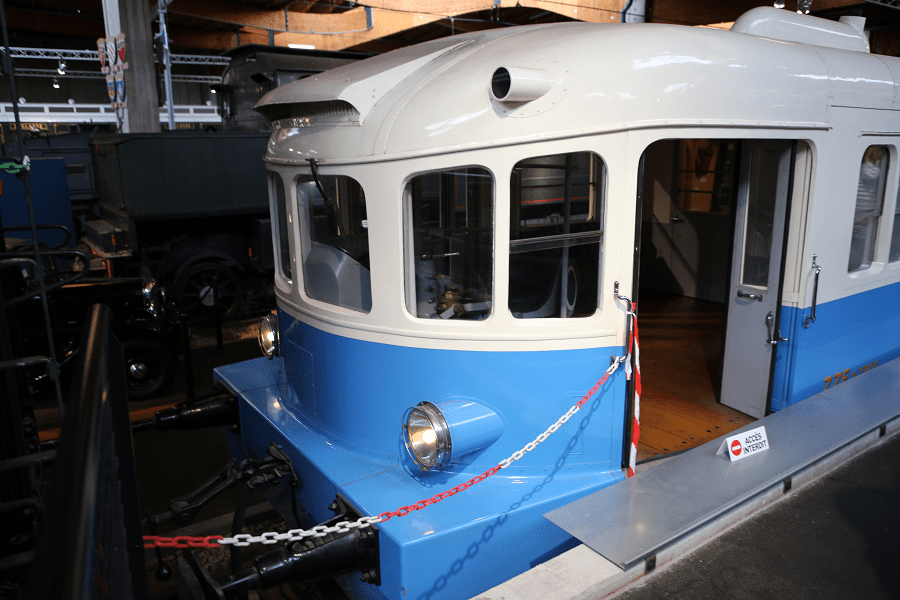The SNCF Renault railway automotor Type VH 2211 from 1933.
Renault VH is the first standard-gauge railcar produced by Renault in large numbers, starting in 1933. One hundred units were manufactured in the Ile Seguin factories near Paris. The units ran on various SNCF lines until 1970. Two examples have been preserved; one at Cité du Train, the other at Train à vapeur des Cévennes (CITEV).
From 1922 to 1932, Renault built several types of railcars, either one-offs or in very limited series. This allowed the company to test various technical options, notably diesel propulsion.
By 1933, the company had perfected the basic design for a railcar, the Type VH, building 15 units at the Ile Seguin factory. These fifteen railcars were made available to various French railways. The networks of Alsace-Lorraine, the P.O., the PLM, the Compagnie de l’Est and the Chemins de fer de l’État used these railcars, which were delivered between March and December 1933.
This first delivery led to an order for 85 additional units from these same railways, in addition to orders from the Chemins de Fer du Nord and the Compagnie des chemins de fer secondaires du Nord-Est (CFNSE). The units from this second order were delivered from 1934 to June 1935.
These units (except for those of the CNFSE) were transferred between the various railways until they were eventually absorbed into the SNCF in 1938.
Technical Details
The VH are equipped with the Renault 12-A-130 engine with twelve V-cylinders (27 liters of overall displacement), producing 220 hp. This engine sends power via a clutch to a four-speed gearbox equipped with an inverter. The power is transmitted to the two axles of the driving bogie by a universal joint. All controls are manual. The engine is cooled by a voluminous streamlined radiator on the roof equipped with an adjustable flap (earning the VH their nickname “Iroquois” as it resembled the traditional head dress worn by Native Americans). As built, the units came with buffers and Willison couplers.
The large roof-mounted radiator was used to cool the Renault 12-A-130 engine, which was located in one of the control cabs in the unit. Another other control cab was located in the baggage compartment at the opposite end of the VH. Drivers preferred the much quieter, less odorous and cooler control cab in the baggage compartment.
During the Second World War, the units sat idle due to a lack of fuel (as did most other railcars). In spite of precautions taken by the SNCF to park them in safe locations, nine VH units were badly damaged and retired from 1944 to 1950. The remainder underwent extensive updating and modifications, adding sleepers, simplified couplers, multiple unit controls, more powerful Type 517 engines producing 300 hp, updated heating systems, new paint schemes and unified headlights, before being able to return to service.















